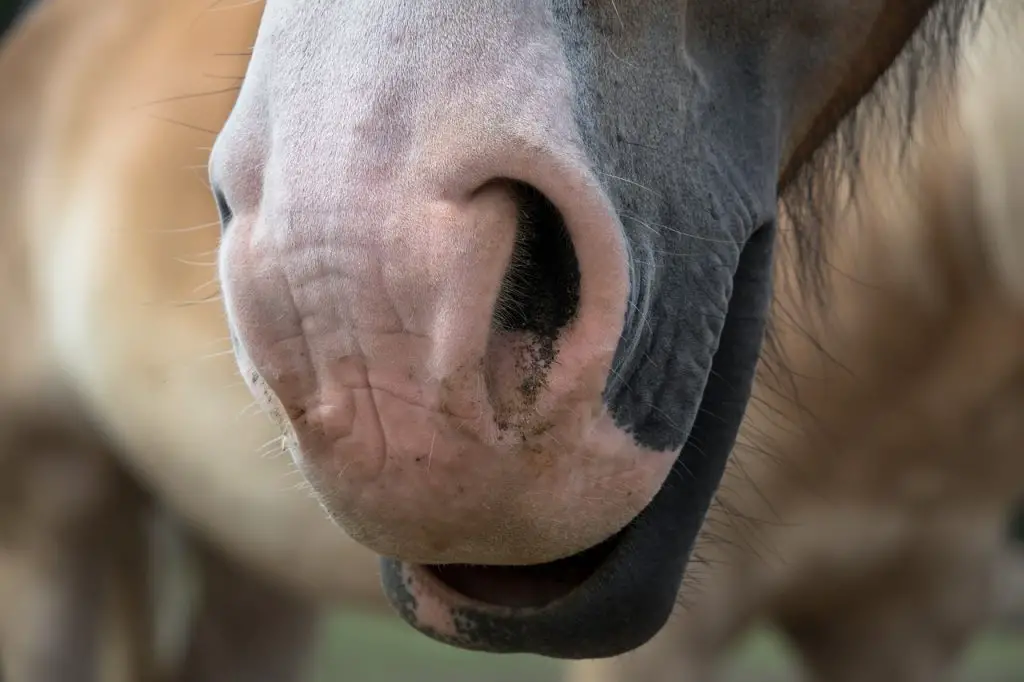Last Updated on February 23, 2022 by Allison Price
It’s important to ensure that your horse’s sniffles don’t become a serious health problem.
It’s not the best thing for your horse to have a snotty nostril. Before you grab a rag and wipe your horse’s nose, be sure to take some time to examine the discharge. It’s likely that it isn’t something serious. However, you should make sure that the nasal secretions do not indicate a serious problem.Although a runny nose is not likely to be the result of a serious condition, you shouldn’t ignore it.
TAKE A CLOSE LOOK
* Check the discharge. Note its consistency, color, smell, quantity, and consistency. You should note whether foreign material, such as food particles, dust, or dirt, is present. Also, be sure to determine if it comes from one nostril or both. Take photos with your smartphone to show your vet and keep track of any changes.
* Pay attention to your horse’s behavior Is he apathetic or drowsy? Is he anxious or stressed? Is he eating and drinking as normal? Is he choking?
* Take a look at his vital signs. Does he have a fever? A high heart rate at rest could indicate pain. A respiratory disease could be developing if your horse has a runny nose or coughs.
However, if your horse has clear, watery nasal discharge and otherwise appears healthy, it is probably nothing to be concerned. Most likely, he inhaled some hay or dust which caused irritation to his nasal passages.
Perhaps he has a little bit of dirt in his eye and excess tears are leaking through his nostrils. You can wipe the excess moisture off, but make sure to keep an eye on your horse so that the discharge doesn’t return.
It is normal to see a trickle of bright red blood stop within minutes. Most likely, your horse scratched one nostril with a stick in grass or a piece of hay.
CALL YOUR VETERINARIAN TO SEE THESE SIGNNS
* A foul-smelling discharge may indicate an infection, possibly in a tooth/sinus. One side of the horse’s face may be affected by swelling. Thick, gray and frothy mucus that is also foul-smelling may indicate an infection in the guttural pouches. These are the sacs connecting to the eustachian tube between the horse’s throat and ears.

* A rapid flow of blood without halting or slowing down within half an hour could be indicative of injury to the nasal passages.
* Dark Blood The horse’s nose may have been blocked by fluids from his sinuses or guttural pockets. The problem could be in the horse’s respiratory tract if dark blood is seen gushing from his head when he lowers it.
* Pus-filled, thick, yellow mucus could be caused by a bacterial, viral, or strangles infection. The horse may also experience a fever, cough, and other symptoms of illness in either case. Strangles may cause pain under the jaw or around the throat. The horse may also be unable to stand straight.
* Saliva or chewed foodemerging out of the nose/mouth are signs that the horse has choke. This is caused by a blockage in his esophagus, which prevents what he eats from reaching his stomach. Choke can also cause coughing, gagging and panic. You should immediately stop feeding the horse and keep him hydrated until you can see a vet.
To be Safe
If your horse is showing signs of a contagious disease, such as strangles, or respiratory infections, you should isolate him from other horses. You can place him in a stall or small turnout so that he is not in direct contact with other horses. Also, you should take precautions to prevent spreading an infection on your clothes or hands. While you wait to see the veterinarian, you will need to wash your hands and change your clothes.



